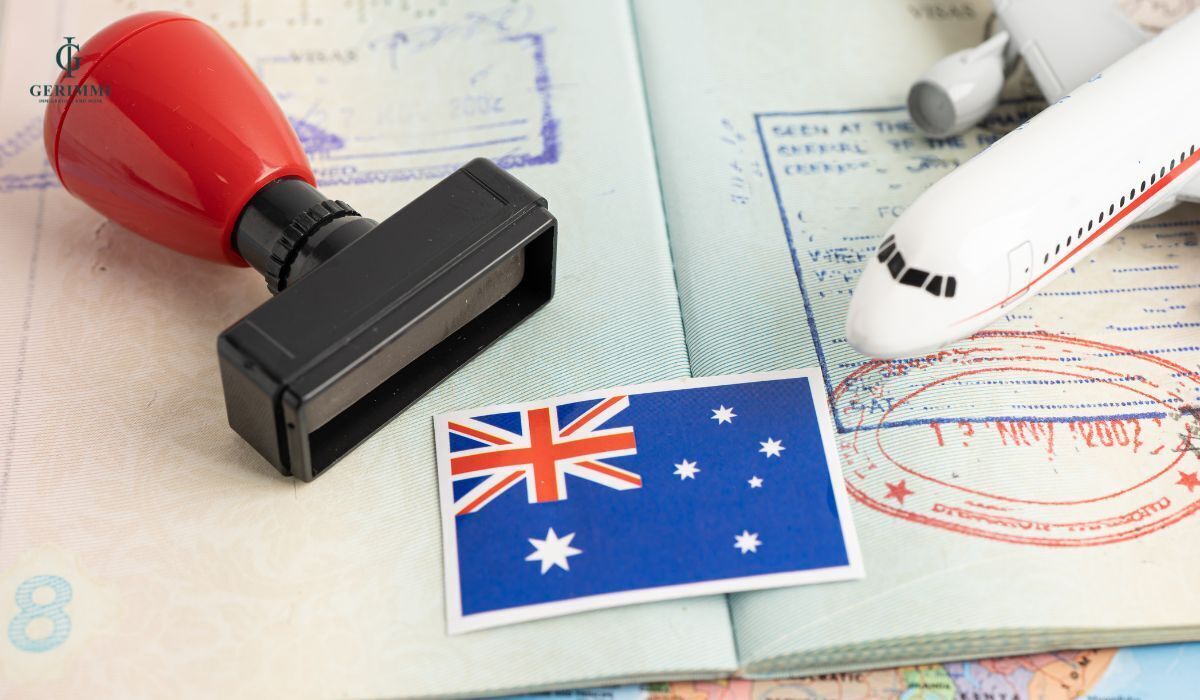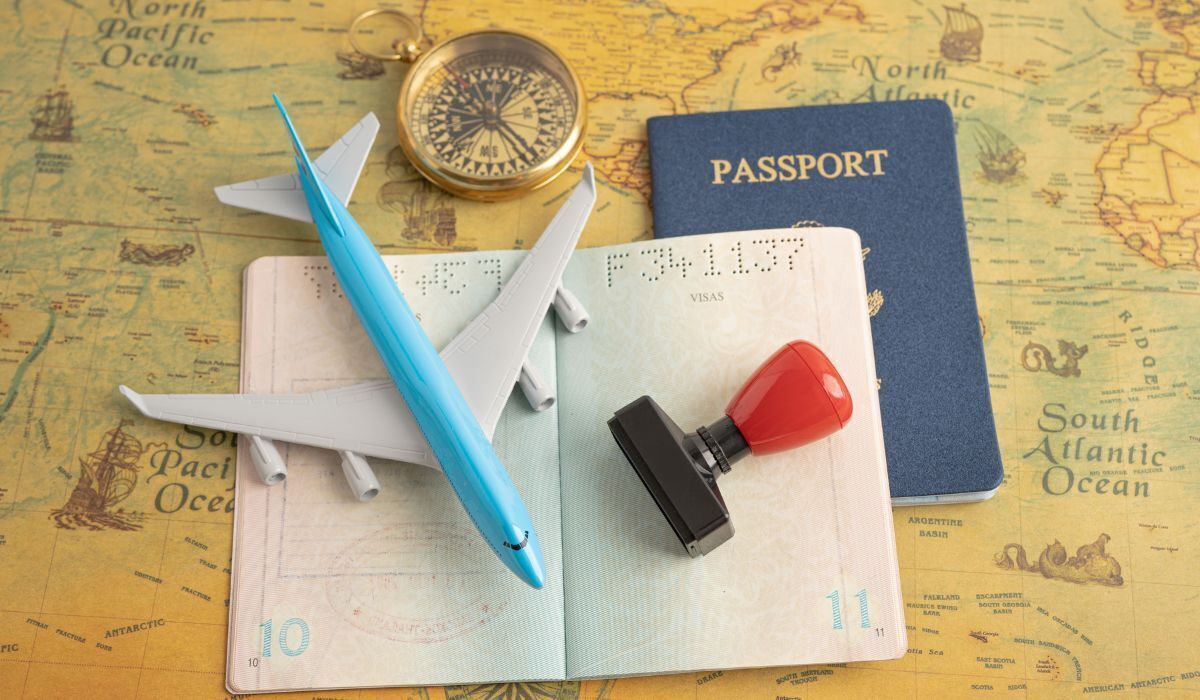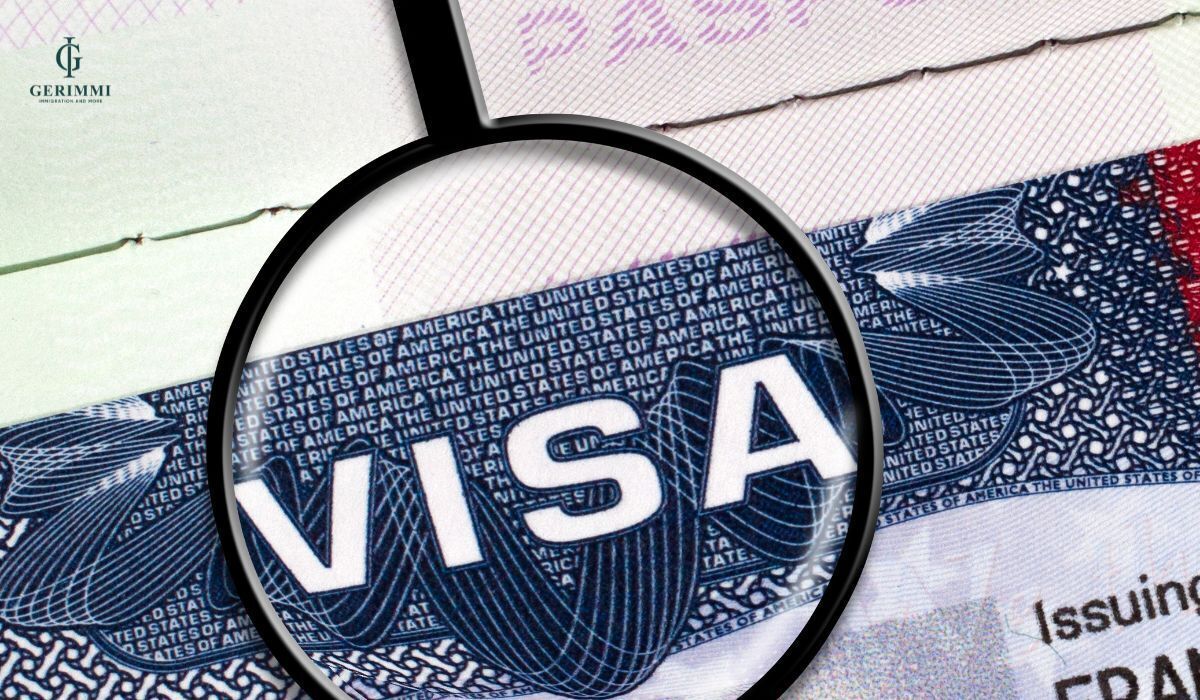Vocational training in Australia is not only an opportunity to study and work but also opens the door to permanent settlement. However, each type of study and training visa in Australia has different conditions, benefits and limitations. Understanding the differences between Visa 500, Visa 485, Visa 407 and Visa 590 will help you choose the right path, save time, costs and improve your ability to settle in Australia.
I. The role of visa in the path from study to settlement
- Legal permission to study and live in Australia
A visa is a “passport of rights” that allows international students to enter, study and live legally in Australia for the duration of their vocational training program. Without a valid visa, you will not be able to start your course or will be forced to leave Australia. In addition, a visa also shows your legal residency status, helping to avoid legal problems during your studies and living.
- Open doors to work during and after school
Some visas, such as Visa 500 (Student Visa), which allows you to work part-time within certain hours to both study and cover expenses. After graduation, Visa 485 (Temporary Graduate Visa) allows you to stay in Australia to work full-time from 18 months to 4 years depending on your level. This is a golden opportunity to gain experience, increase settlement points and build a professional network in Australia.
- Bridge to skilled visas and permanent residency
After gaining work experience from a temporary visa, you may be eligible to apply for skilled permanent resident visas such as Subclass 189 (Skilled Independent Visa) hoặc Subclass 190 (Skilled Nominated Visa). A vocational student visa is not only a starting point for your studies, but also a strategic bridge to your goal of becoming an Australian permanent resident.
- Create a competitive advantage when applying for jobs and settling down
Australian employers often give priority to candidates with valid and long-term work visas. Having a clear visa path and meeting immigration requirements will help enhance your profile, increase your chances of being recruited or sponsored for permanent residence. This is especially important in occupations that are in shortage of human resources such as nursing, IT, engineering, and chefs.

II. Why is it necessary to clearly distinguish between visa types?
- Each visa has different purposes and benefits.
The 500 visa is designed for full-time study; the 485 visa is for recent graduates who want to stay and work; the 407 visa is for supervised vocational training; and the 590 visa is a guardian visa for people under 18. If you do not understand the difference, you may choose the wrong visa, which will directly affect your study and settlement plans.
- Avoid violating visa conditions
Every visa comes with mandatory conditions, such as limits on overtime hours, the need to maintain academic performance, or the need to maintain OSHC. Failure to do so can result in a warning or cancellation of your visa. Serious breaches can even result in being banned from applying for an Australian visa for a number of years.
- Optimize your study, work and settlement path
Understanding each visa type will help you build a strategy from the beginning: choosing a priority occupation, determining when to apply for a new visa, and ensuring that your application is not interrupted. Many international students successfully immigrate to Australia by planning to switch from Visa 500 to Visa 485 and finally to a skilled migration visa.
- Save time and money
Applying for the wrong visa type not only costs you a fee (usually several hundred to several thousand AUD), but also takes time to process, and can mean missing out on job opportunities or priority settlement periods. Understanding each visa type from the start will help you avoid these costly risks and increase your chances of achieving your settlement goals quickly.

III. Popular types of study and training visas
1. Visa 500 - Student Visa
The 500 visa is the most common Australian vocational student visa, allowing international students to study full-time at a recognised vocational school, college or university in Australia. This visa is usually valid for the length of the course plus a short period to prepare to leave Australia or switch to another visa.
With Visa 500, students can work up to 48 hours/2 weeks during the study period and full-time during the holidays. This is the first step in the Australian skilled migration pathway if you choose a field of study on the priority occupation list such as MLTSSL or STSOL.
2. Visa 485 - Temporary Graduate Visa
The 485 visa is a post-study work visa for international students who have completed at least 2 years of full-time study in Australia. This visa allows you to stay for 18 months to 4 years to work, gain experience and prepare for an application for an Australian permanent resident visa such as Subclass 189 or Subclass 190.
To be eligible for a 485 visa, your field of study must be on the Australian Skilled Migration List (MLTSSL) and you must meet the English language requirements. This is an important opportunity to improve your Skilled Migration Points and increase your chances of permanent residence in Australia.

3. Visa 407 - Training Visa
Visa 407 is a vocational training visa in Australia for people who want to improve their skills or professional knowledge through short-term training programs sponsored by an organization or business in Australia. This visa is valid for up to 2 years, suitable for occupations that are in shortage of human resources such as nursing, chefs, engineers, and hotel and restaurant management.
With Visa 407, you not only get to study and work in a real environment but also have the opportunity to expand your professional network, creating the premise to switch to a long-term work visa or Australian settlement visa.
4. Visa 590 - Student Guardian Visa
Visa 590 is a student guardian visa for parents or legal guardians of students under 18 years of age studying in Australia. This visa allows them to stay in Australia while the student is studying, but does not allow them to work. Visa 590 applicants need to demonstrate financial capacity, good health, and a legitimate relationship with the student.
This visa plays an important role in ensuring safety and supporting the living and studying of international students, especially secondary school students or vocational students studying in Australia under the age of majority.

IV. Quick comparison of visa types (table or bullet)
|
Visa Type |
Main purpose |
Duration |
Main benefits |
Outstanding conditions |
|
Visa 500 - Student Visa |
Full-time study at an accredited institution |
Up to 5 years |
Study and work 48 hours/2 weeks during semester, full-time during break |
Have CoE, financial proof, English certificate |
|
Visa 485 - Temporary Graduate Visa |
Stay and work after graduation |
18 months - 4 years |
Work full time, accumulate settlement points |
Complete 2 years of course, occupation in priority list |
|
Visa 407 - Training Visa |
Vocational training, skill improvement |
Up to 2 years |
Supervised training and on-the-job experience in Australia |
Have an invitation letter from a sponsoring organization, meet English requirements |
|
Visa 590 - Student Guardian Visa |
Guardianship for students under 18 years old |
According to student visa duration |
Legal residence in Australia, student support |
Proof of relationship and financial capacity |
V. Things to know when choosing an Australian vocational study visa
- Clearly define your study and settlement goals from the beginning
Before choosing a type of Australian vocational study visa, you need to clearly determine whether you just want to study and experience, or aim for long-term skilled settlement in Australia. If your goal is to stay and work and apply for an Australian permanent settlement visa, you should consider the popular route from Visa 500 → Visa 485 → Subclass 189 or 190. Early orientation helps you choose a major on the priority list (MLTSSL, STSOL, ROL, PMSOL) to optimize your opportunities.
- Research in detail the benefits, duration and conditions of each type of visa
Each type of visa has different benefits and restrictions: Visa 500 allows you to study and work up to 48 hours/2 weeks, Visa 485 allows you to work full-time but requires you to complete a 2-year course and your occupation must be on the Australian immigration priority list, Visa 407 is for sponsored training programs, Visa 590 is for guardianship purposes. If you do not research carefully, you may choose the wrong type of visa, which will directly affect your study and settlement plans.
- Carefully calculate the cost of applying for and maintaining a visa
In addition to the visa application fee (which can range from a few hundred to a few thousand AUD), you need to consider additional costs such as compulsory OSHC health insurance, health examination fees, notarized document translation fees, airfare, and living expenses in Australia. A clear financial plan will help you avoid running out of funds midway through your studies, causing disruption to your studies or visa renewal.
- Prepare complete, accurate and correct documents according to the requirements of the Australian Department of Home Affairs
A standard Australian vocational student visa application package includes a valid passport, a letter of offer (CoE), qualifications, English language certificates (IELTS, PTE Academic, TOEFL iBT), financial documents, OSHC, and a health certificate. Incorrect or missing documents may result in a delay in processing or refusal of the application.

VI. Note details for each situation
- For students under 18 who need a legal guardian
If you are an international student under 18 years of age, a Student Guardian Visa (Visa 590) is required for a relative or guardian to be legally allowed to reside in Australia. The guardian must meet the requirements of a legitimate relationship, financial ability to support both of you, and good health. The Visa 590 does not allow work, so it is necessary to prepare a stable financial source before applying.
- Want to stay and work after graduation to gain settlement experience
Visa 485 – Temporary Graduate Visa is a popular option for graduates in Australia who want to stay and work. You need to ensure that your field of study is on the Australian Skilled Migration Priority List and complete at least 2 years of full-time study. This visa helps you gain work experience, increase your points in the Skilled Migration Points Test and pave the way to PR (Permanent Residency).
- Participate in a sponsored short-term vocational training program
Visa 407 – Training Visa is suitable for people with professional background who want to improve their skills, sponsored by an organization or business in Australia. Maximum stay is 2 years, usually applied to occupations with shortage of human resources such as nursing, chef, engineer. This is also an opportunity for you to experience the real working environment in Australia and expand your professional network.
- Plan to convert visa to permanent residence
If your goal is to settle in Australia, you need to have a clear visa transition path: starting with a Visa 500 to study → switching to a Visa 485 to work and gain experience → achieving the necessary points to apply for permanent visas such as Subclass 189 (Skilled Independent Visa) or Subclass 190 (Skilled Nominated Visa). Calculating the path early will help you avoid interruptions due to visa expiration or ineligibility.

Conclusion
Distinguishing and understanding the typesAustralian vocational study visa is an important step for you to build an effective study, work and settlement strategy. Choose the visa type that suits your personal goals, field of study and long-term plans, and always updateAustralian visa policy/latest to get the most out of your benefits.

